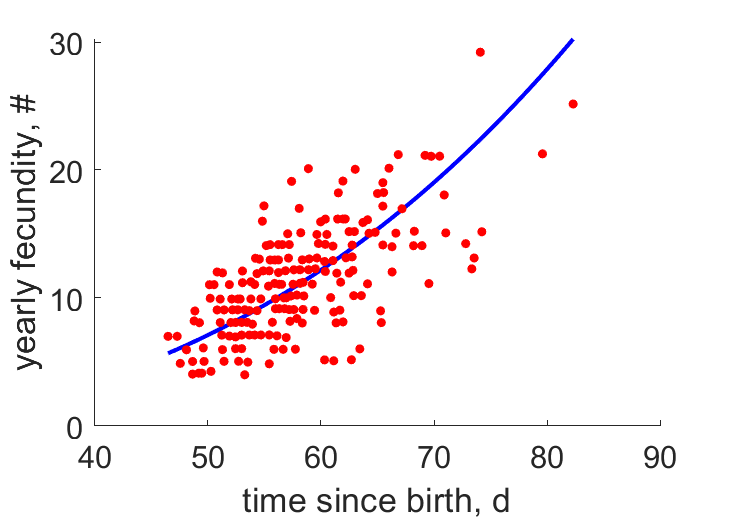Predictions & Data for this entry
| Model: std | climate: BSk | migrate: | phylum: |
| COMPLETE = 2.5 | ecozone: THn | food: biCv | class: |
| MRE = 0.044 | habitat: 0iTg, 0iFm | gender: Dg | order: |
| SMSE = 0.009 | embryo: Ts | reprod: O | family: |
Zero-variate data
| Data | Observed | Predicted | (RE) | Unit | Description | Reference |
|---|---|---|---|---|---|---|
| ab | 79 | 78.27 | (0.009251) | d | age at birth | guess |
| am | 3504 | 3428 | (0.02168) | d | life span | guess |
| Lb | 17.5 | 18.09 | (0.03391) | cm | SVL at birth | RossRoss2000 |
| Lp | 46 | 45.68 | (0.007006) | cm | SVL at puberty for females | GreeDixo1999 |
| Lpm | 38 | 37.03 | (0.02565) | cm | SVL at puberty for males | GreeDixo1999 |
| Li | 82.3 | 84.37 | (0.0252) | cm | ultimate SVL for females | GreeDixo1999 |
| Lim | 65.8 | 68.39 | (0.03935) | cm | ultimate SVL for males | guess |
| Wwb | 3.8 | 3.728 | (0.01907) | g | wet weight at birth | RossRoss2000 |
| Wwi | 380 | 378 | (0.005296) | g | ultimate wet weight | guess |
| dLb | 0.1639 | 0.154 | (0.06067) | cm/d | change in SVL at birth | RossRoss2000 |
Uni- and bivariate data
| Data | Figure | Independent variable | Dependent variable | (RE) | Reference |
|---|---|---|---|---|---|
| LN |  | time since birth | yearly fecundity | (0.237) | GreeDixo1999 |
Pseudo-data at Tref = 20°C
| Data | Generalised animal | Nerodia harteri | Unit | Description |
|---|---|---|---|---|
| v | 0.02 | 0.02382 | cm/d | energy conductance |
| kap | 0.8 | 0.8333 | - | allocation fraction to soma |
| kap_R | 0.95 | 0.95 | - | reproduction efficiency |
| p_M | 18 | 145.9 | J/d.cm^3 | vol-spec som maint |
| k_J | 0.002 | 0.001 | 1/d | maturity maint rate coefficient |
| kap_G | 0.8 | 0.8016 | - | growth efficiency |
Discussion
- Males are assumed to differ from females by {p_Am} and E_Hp only
- Temperatures are guessed
Bibliography